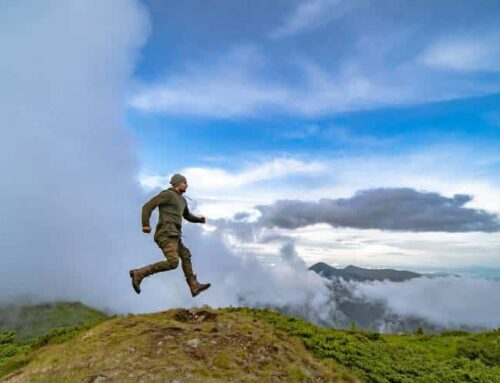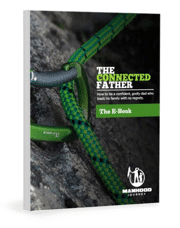God is powerful enough to accomplish whatever He wants with no help from anyone else. Thankfully, His Word demonstrates that He chooses to use people to fulfill His plans and purposes in the world. That’s why it’s important to learn about who were the 12 disciples and what were their jobs and what they did for the kingdom.
When it comes to understanding who the twelves disciples were and what they did, it’s important to recognize that they spent three years with Jesus. And while we know more about some of them than others, we know that their time with the Savior made an incredible impact on their lives. So, above anything else they might have done, we certainly can learn how to be disciples ourselves by studying how they interacted with Jesus.
What Is a Disciple?
Simply put, a disciple is a student. Disciples are learners who commit themselves to a single master teacher. They strive to learn his ideas about life and to follow those principles in their own everyday experiences. They want to become more like their mentor.
Of course, for the twelve disciples, their Master Teacher was Jesus—the greatest Teacher who ever lived. Admittedly, they were slow in learning some of the lessons He wanted to teach. But, as mentioned, once they completely surrendered to Him, they spread His message around the known world in short order.
In addition, they gave us an example of what it means to be a disciple of Jesus in our world.
Who Were Jesus’s Disciples?
Who were the 12 disciples and what were their jobs? Most folks know that Jesus called twelve men to become His disciples. But we should understand that none of them were forced into the relationship. Each of them made the voluntary decision to become students of the Savior.
They weren’t perfect. Like us, they had their ups and downs in their relationship with Jesus. Some days were better than others. But they were willing to walk in His steps, to learn from Him and try to imitate Him. They sought to obey Him as best as they could. Eventually, they even suffered for Him, and most of them died for Him.
Here’s a quick look at Jesus’s twelve disciples and what they did.
Peter
A fisherman by trade, Peter became the vocal leader of the group while Jesus was on earth and a prominent leader of the church after He went back to heaven. In the various lists of the disciples in the Bible (Matthew 10:1-4; Mark 3:16-19; Luke 6:12-16; and Acts 1:13), he is always listed first. He also went on to write two books in the New Testament that bear his name.
But he had his problems early on. During his time with Jesus, Peter alternated between humble submission and arrogant bravado. He might acknowledge Jesus one minute and be chastised by Him the next. But, in the end, he didn’t let his failures define him. He helped establish the church among both Jews (Acts 2) and Gentiles (Acts 10). Tradition states that he moved to Rome, where he was executed by hanging upside down on a cross.
James
Like Peter, James was a leader among the twelve disciples. The two of them, along with James’s brother John, formed what has been called Jesus’s “inner circle.” The Gospels often show Jesus pulling them aside to experience things the others did not (Matthew 17:1-2; Mark 5:36-37; 14:32-34).
After the founding of the church, James’s ministry was relatively brief. In fact, the book of Acts tells us that he was the first of Jesus’s twelve disciples to die for his faith. Herod ordered James to be executed by the sword (Acts 12:1-2) a decade or so after Jesus went back to heaven.
John
The brother of James, most scholars believe John was the youngest of the twelve disciples. As noted, he was also part of the inner circle and was the only disciple mentioned at the cross when Jesus died (“the disciple he loved,” John 19:25-27). After the resurrection, John often teamed with Peter to preach. The book of Acts mentions them both being interrogated and persecuted by local religious leaders in Jerusalem.
Tradition holds that while John suffered tremendously for Jesus, he was the only one of the Twelve (aside from Judas) who did not die as a martyr. During his ministry, he served as pastor in Ephesus and also wrote five books of the Bible. One of those works, the book of Revelation, was composed while he was living in exile on the island of Patmos.
Andrew
Andrew was Peter’s brother—and the one who introduced Peter to Jesus (John 1:40-42). In fact, throughout the Gospels, Andrew is portrayed as someone who brought others to the Savior. In addition to his brother, he also found the boy who donated his fish and bread to feed the multitudes (John 6:8-9). And, during the week leading up to Jesus’s crucifixion, he and Philip brought some Greeks to see Jesus in Jerusalem (John 12:20-22). Based on the Gospels, Andrew was the first disciple to follow Jesus, and tradition states that he took the Gospel to Asia Minor (modern Turkey) before being martyred in Greece.
Philip
Philip is another example of disciples who introduce others to Jesus. While Andrew brought Peter, Philip brought his skeptical friend Nathanael to meet the Messiah (John 1:43-51). As noted, he also joined Andrew in bringing some Greeks to meet Jesus before the crucifixion. Jesus also questioned Philip about how the multitude could be fed before Andrew brought the boy with the fish and bread (John 6:5-7). Many scholars believe he became a missionary to northern Africa before eventually dying as a martyr in the region of Phrygia in Asia Minor.
Bartholomew
In each of the New Testament lists of the twelve disciples, Bartholomew is always paired with Philip. Most scholars believe he is also Nathanael, whom Philip introduced to Jesus in John 1. If so, Jesus applauded him for being a man of character. Church tradition suggests that Bartholomew spread the gospel to Africa and Asia, as well as Armenia. He is believed to have died in Armenia, either by beheading or by being flayed alive.
Matthew
In first-century Israel, Matthew was the ultimate outsider. Few occupations were despised more than tax collectors. Jews considered them doubly dishonest because they worked for the hated Romans and often took more from people than what was really owed.
Yet, Jesus saw something in Matthew, who was also known as Levi (Matthew 9:9; Luke 5:27). He refused to stigmatize him or disqualify him from service to God. Matthew responded by taking the good news of Jesus to Africa and possibly Persia. While scholars disagree on what happened to Matthew, church tradition states that he was stabbed to death in Ethiopia.
Thomas
Two things people may know about Thomas is that he was a twin and that he refused to believe in the resurrection of Jesus until he saw the Lord with his own eyes (John 20:24-29). But he also demonstrated great loyalty to Jesus. When the other disciples were worried about going back to Jerusalem prior to Lazarus being raised from the dead, Thomas was ready to be a martyr for the Lord (John 11:16).
Of course, Thomas eventually did become a martyr. Tradition holds that he took the gospel as far as India before dying for Jesus there.
James, the son of Alpheus
To avoid confusion with the brother of John, the son of Alpheus also has been known as James the Less (or Younger). For the most part, this James seemed to fly under the radar. He is not mentioned in the Gospels aside from the lists of the twelve disciples. And little is known about his work after Jesus’s resurrection. But scholars are convinced that he died as a martyr for His faith.
Thaddeus
He was the “other” Judas among Jesus’s twelve disciples, and he was likely related to James, the son of Alpheus. Some translations say he was the son of James, while others say that he was the brother of James. He did ask Jesus a question about the kingdom in John 14:22, but that is his only line in the Gospels.
Like James, little is known about Thaddeus’s ministry following the resurrection of Jesus. Also, details of his death are unclear. One widely accepted tradition is that he was beheaded in Syria, though some scholars and church historians believe he was beaten to death before his head was removed.
Simon the Zealot
The Zealots were a radical quasi-religious group operating in Israel during the first century. While their strict theology aligned them closely with the Pharisees, their violent tactics and outright acts of terror against the Romans moved them outside the mainstream. While Scripture does not state what convinced Simon to shift his allegiance from the Zealots to Jesus, we can assume the transformation was amazing.
Simon likely took the message of Jesus to northern Africa and to regions of Mesopotamia. It is believed that he died as a martyr in Persia for refusing to worship a false god.
Judas Iscariot
Just as Peter leads off every list of Jesus’s twelve disciples, Judas is always the last one mentioned. Every list also emphasizes that he was the one who betrayed Jesus. Other references to him in Scripture are just as unflattering. While John’s Gospel notes that he served as “treasurer” of the group, it also says Judas was a thief (John 12:4-6).
Of course, Judas never saw the resurrected Christ. He committed suicide after feeling remorse over betraying the Lord. To fill out the group’s number to twelve again (a number that might have been connected to the twelve tribes of Israel), the remaining disciples replaced him with Matthias in Acts 1. While not originally one of Jesus’s twelve disciples, Matthias had walked with Jesus during His three years of earthly ministry, so he was qualified to fill the void. Church tradition holds that he did just that in Asia Minor and Africa until he was burned alive for his faith.
Disciples and Apostles
Once Jesus had ascended back to heaven, this core group of followers took on a new role. While they remained disciples, they also served as apostles. The difference between the two in English isn’t as evident as it is in the Greek.
As noted, a disciple is a student, a learner; but apostles are individuals who are sent somewhere with a purpose. So while the Twelve never stopped learning from Jesus, they also embraced His commission to take His message to the world and to show others how to have a personal relationship with Him.
As modern-day disciples, we also have a responsibility to share Jesus with others. As dads and husbands, that starts with our families. But it doesn’t stop there. The Great Commission (Matthew 28:18-20) challenges us to minister around the world. For some that means becoming a missionary. For others, it means sharing with our neighbors or co-workers.
We can’t be true disciples without it.













